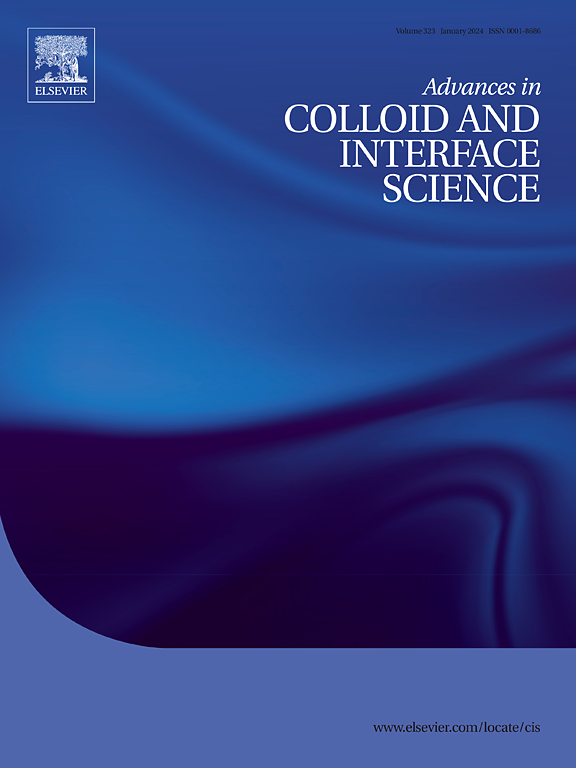Debugging the dynamics of protein corona: Formation, composition, challenges, and applications at the nano-bio interface
IF 15.9
1区 化学
Q1 CHEMISTRY, PHYSICAL
引用次数: 0
Abstract
The intricate interplay between nanomaterials and the biological molecules has garnered considerable interest in understanding the dynamics of protein corona formation at the nano-bio interface. This review provides an in-depth exploration of protein-nanoparticle interactions, elucidating their structural dynamics and thermodynamics at the nano-Bio interface and further on emphasizing its formation, composition, challenges, and applications in the biomedical and nanotechnological domains, such as drug delivery, theranostics, and the translational medicine. We delve the nuanced mechanisms governing protein corona formation on nanoparticle surfaces, highlighting the influence of nanoparticle and biological factors, and review the impact of corona formation on the biological identity and functionality of nanoparticles. Notably, emerging applications of artificial intelligence and machine learning have begun to revolutionize this field, enabling accurate prediction of corona composition and related biological outcomes. These tools not only enhance efficiency over traditional experimental methods but also help decode complex protein-nanoparticle interaction patterns, offering new insights into corona-driven cellular responses and disease diagnostics. Additionally, it discusses recent advancements in the field of protein corona, particularly in translational nanomedicine and associated applications entailing current and future strategies which are aimed at mitigating the adverse effects of protein-nanoparticle interactions at the biological interface, for tailoring the protein coronas by engineering of the nanomaterials. This comprehensive assessment from chemical, technological, and biological aspects serves as a guiding beacon for the development of future nanomedicine, enabling the more effective emulation of the biological milieu and the design of protein-NP systems for enhanced biomedical applications.

蛋白质电晕的动态调试:形成,组成,挑战和应用在纳米生物界面
纳米材料和生物分子之间复杂的相互作用引起了人们对纳米生物界面上蛋白质电晕形成动力学的极大兴趣。这篇综述深入探讨了蛋白质-纳米颗粒相互作用,阐明了它们在纳米生物界面上的结构动力学和热力学,并进一步强调了蛋白质-纳米颗粒相互作用的形成、组成、挑战以及在生物医学和纳米技术领域的应用,如药物传递、治疗学和转化医学。我们深入研究了纳米颗粒表面蛋白质电晕形成的微妙机制,强调了纳米颗粒和生物因素的影响,并回顾了电晕形成对纳米颗粒生物学特性和功能的影响。值得注意的是,人工智能和机器学习的新兴应用已经开始彻底改变这一领域,能够准确预测电晕组成和相关的生物学结果。这些工具不仅提高了传统实验方法的效率,而且还有助于解码复杂的蛋白质-纳米颗粒相互作用模式,为冠状病毒驱动的细胞反应和疾病诊断提供新的见解。此外,它还讨论了蛋白质冠领域的最新进展,特别是在转化纳米医学和相关应用方面,这些应用涉及当前和未来的策略,旨在减轻蛋白质-纳米颗粒在生物界面上相互作用的不利影响,通过纳米材料的工程来定制蛋白质冠。这种从化学、技术和生物学方面进行的综合评估为未来纳米医学的发展提供了指路明灯,使更有效地模拟生物环境和设计蛋白质- np系统以增强生物医学应用。
本文章由计算机程序翻译,如有差异,请以英文原文为准。
求助全文
约1分钟内获得全文
求助全文
来源期刊
CiteScore
28.50
自引率
2.60%
发文量
175
审稿时长
31 days
期刊介绍:
"Advances in Colloid and Interface Science" is an international journal that focuses on experimental and theoretical developments in interfacial and colloidal phenomena. The journal covers a wide range of disciplines including biology, chemistry, physics, and technology.
The journal accepts review articles on any topic within the scope of colloid and interface science. These articles should provide an in-depth analysis of the subject matter, offering a critical review of the current state of the field. The author's informed opinion on the topic should also be included. The manuscript should compare and contrast ideas found in the reviewed literature and address the limitations of these ideas.
Typically, the articles published in this journal are written by recognized experts in the field.

 求助内容:
求助内容: 应助结果提醒方式:
应助结果提醒方式:


